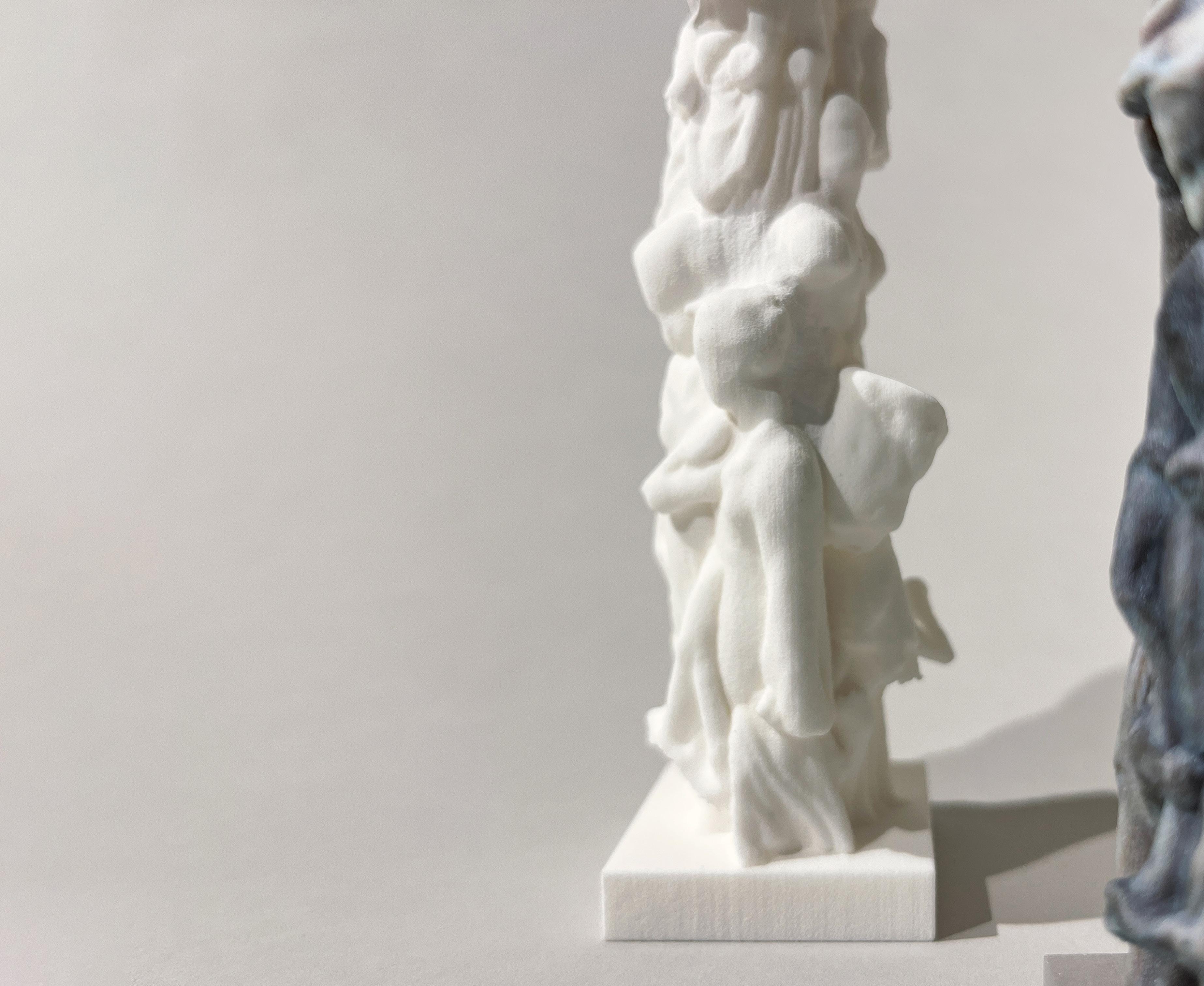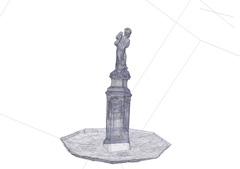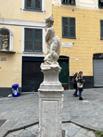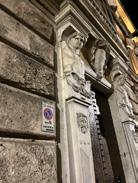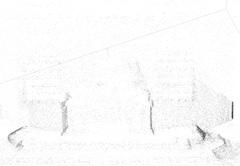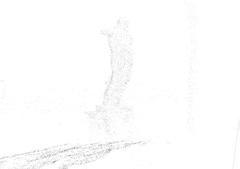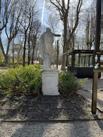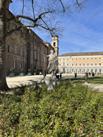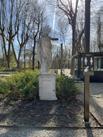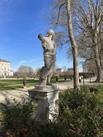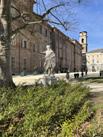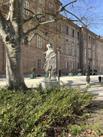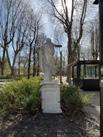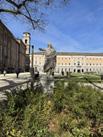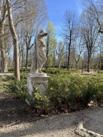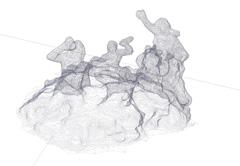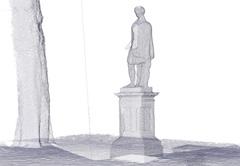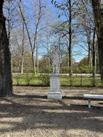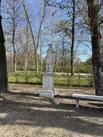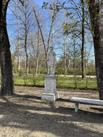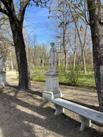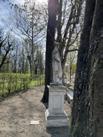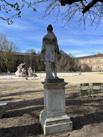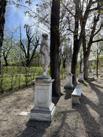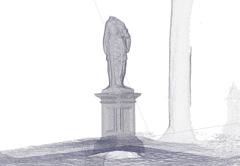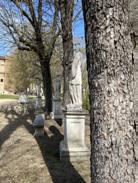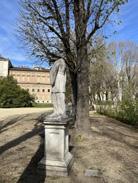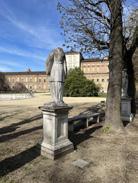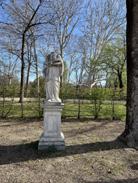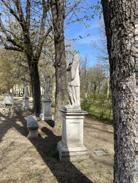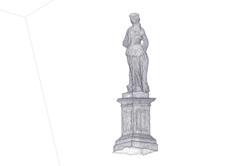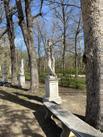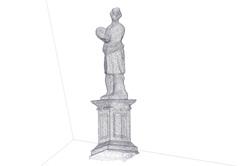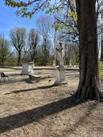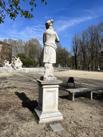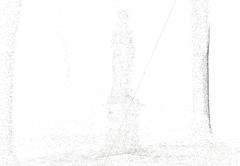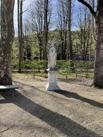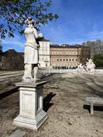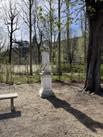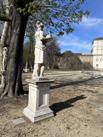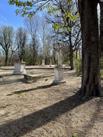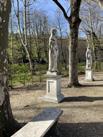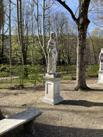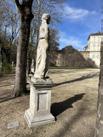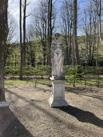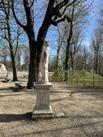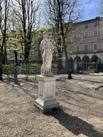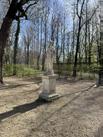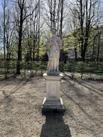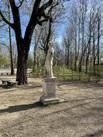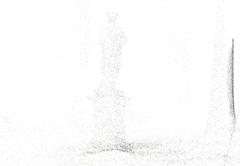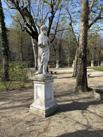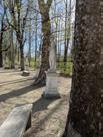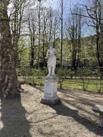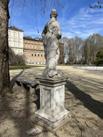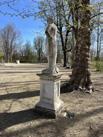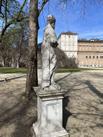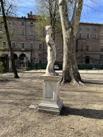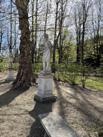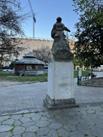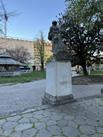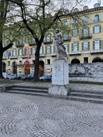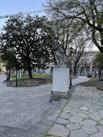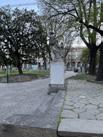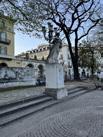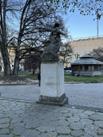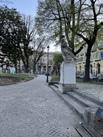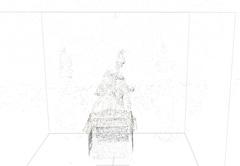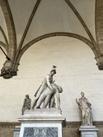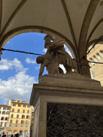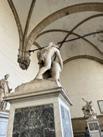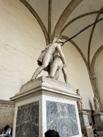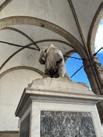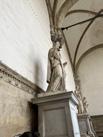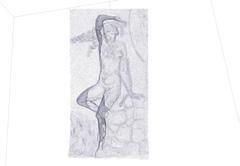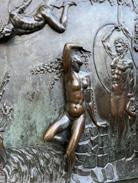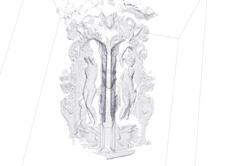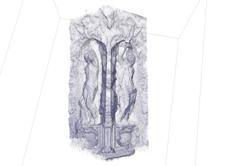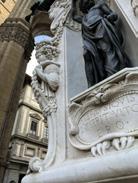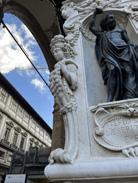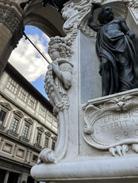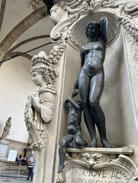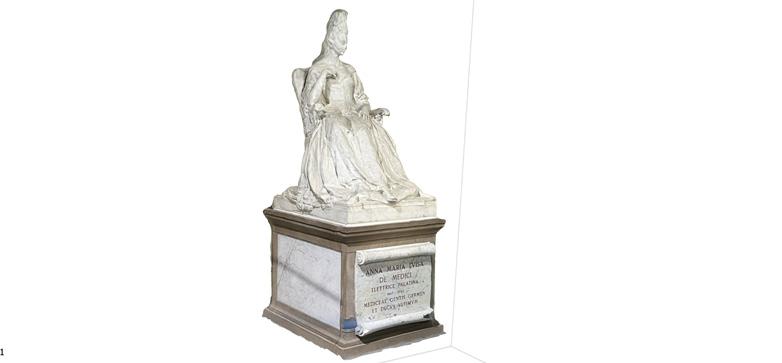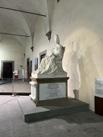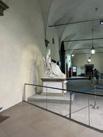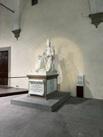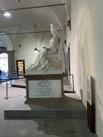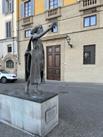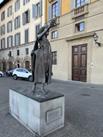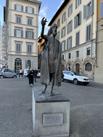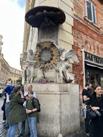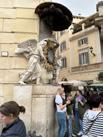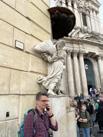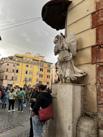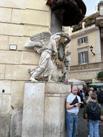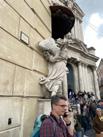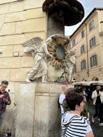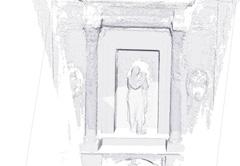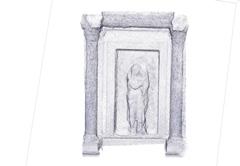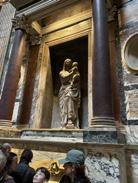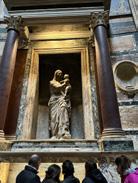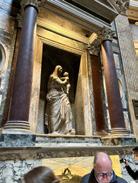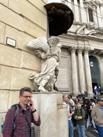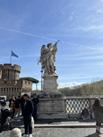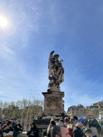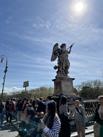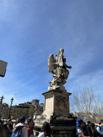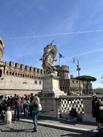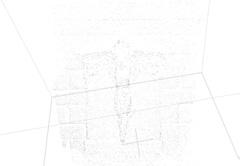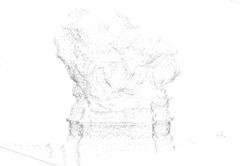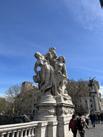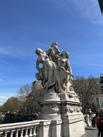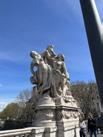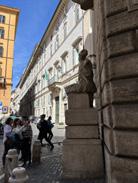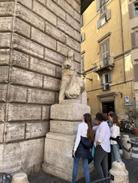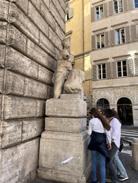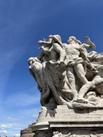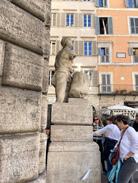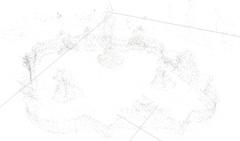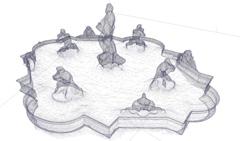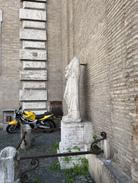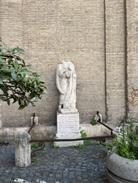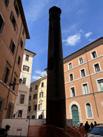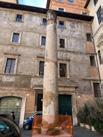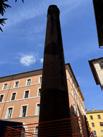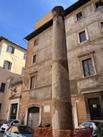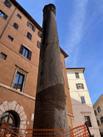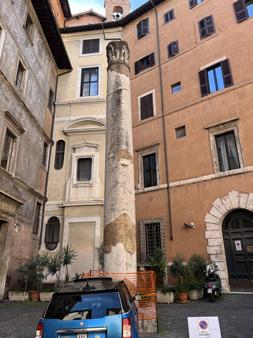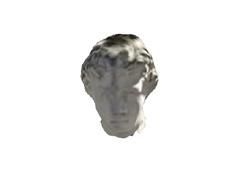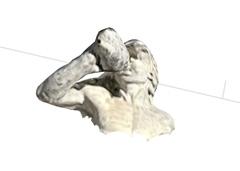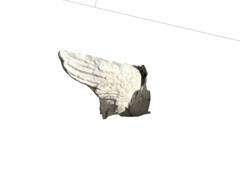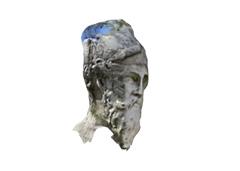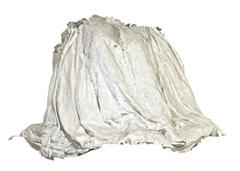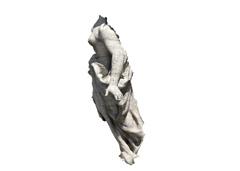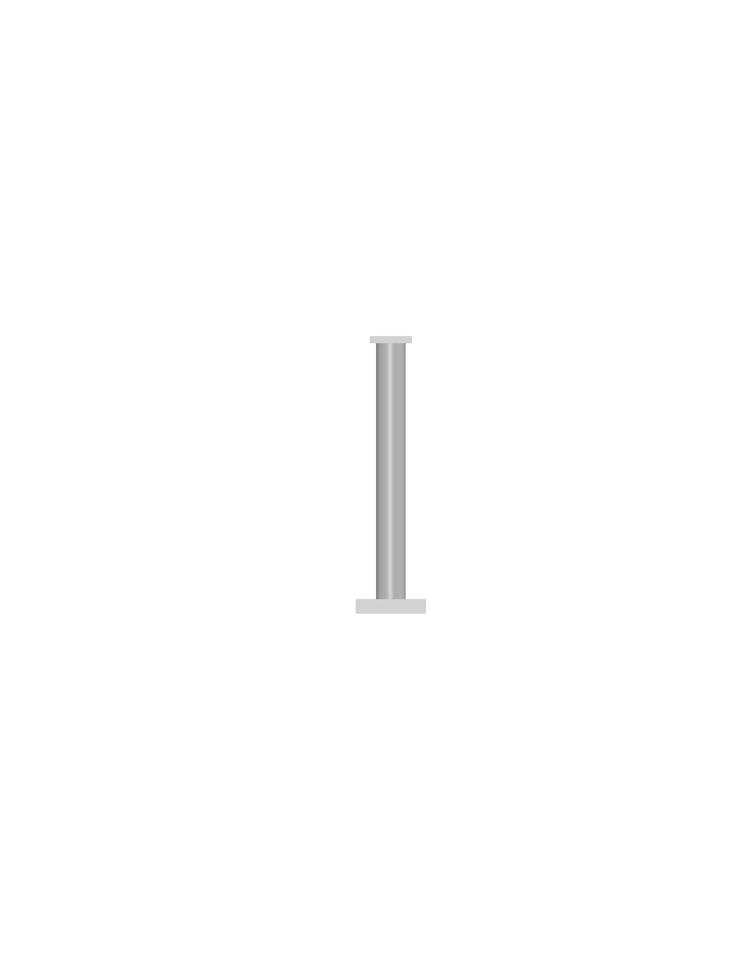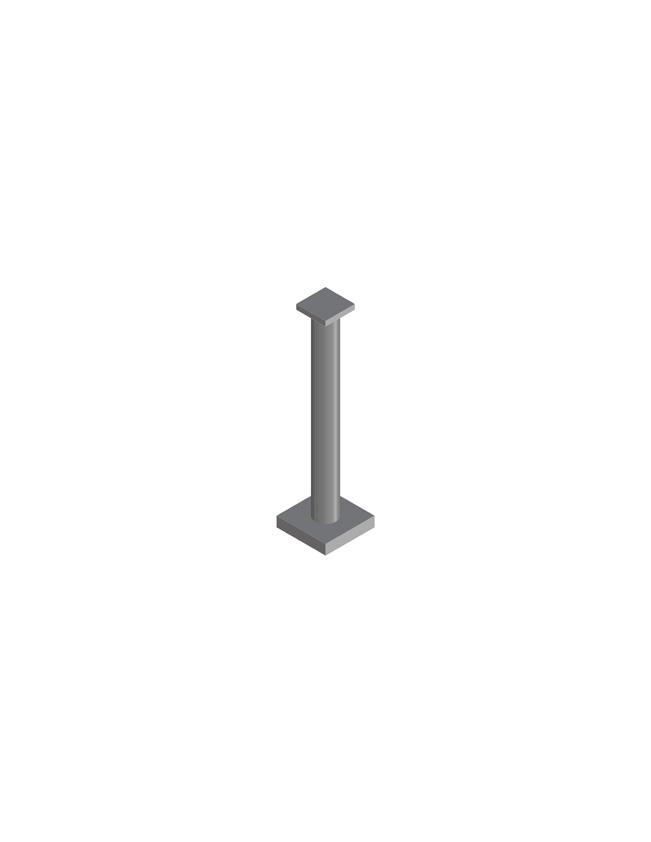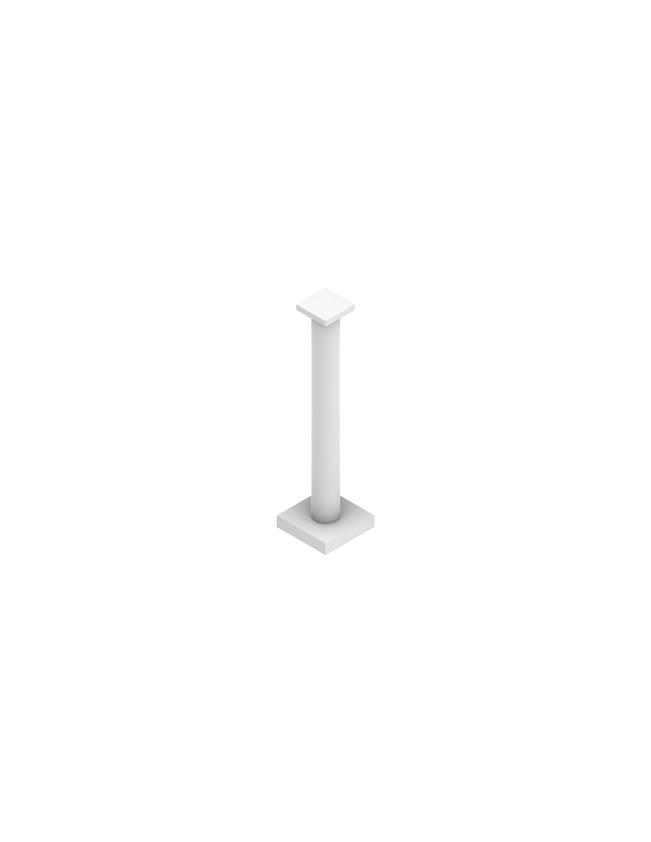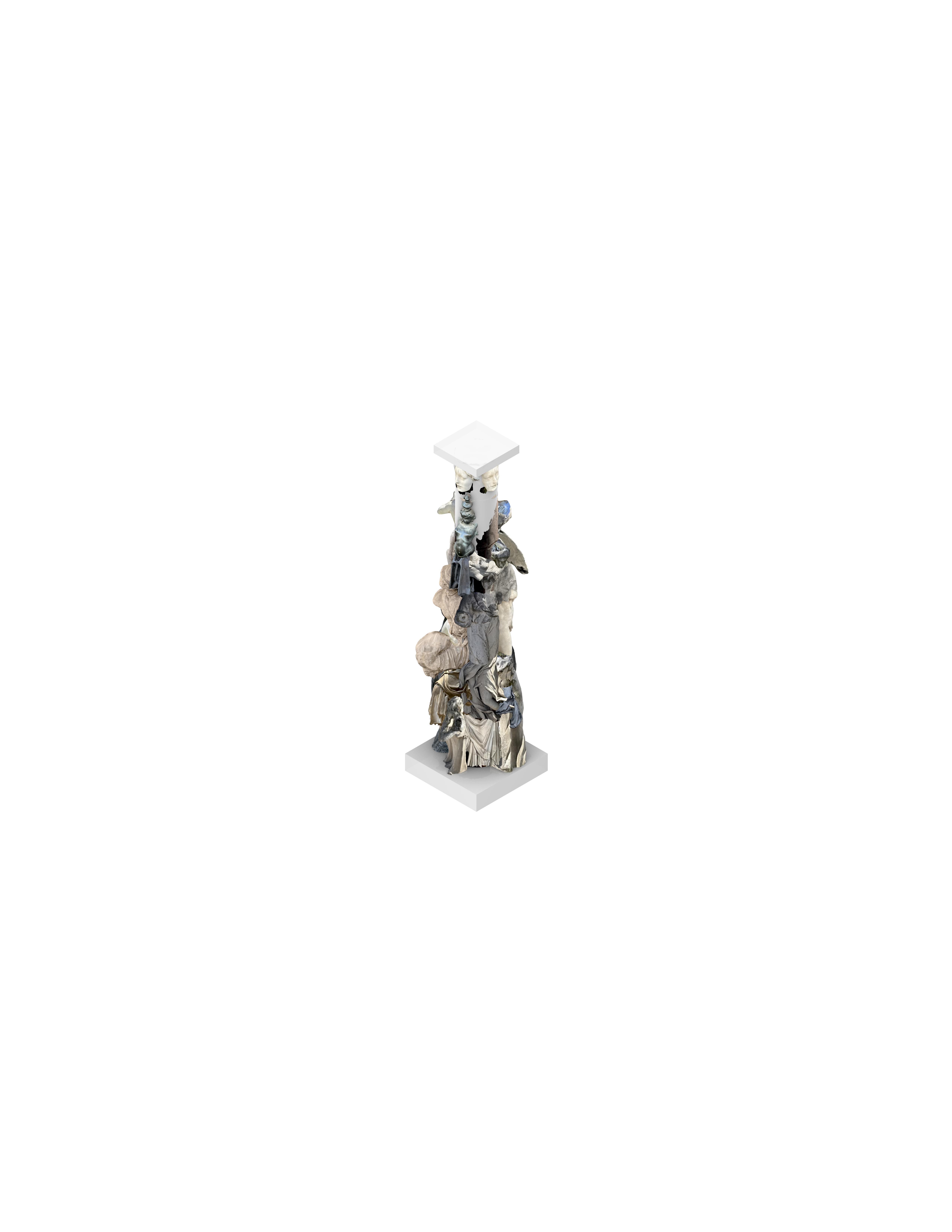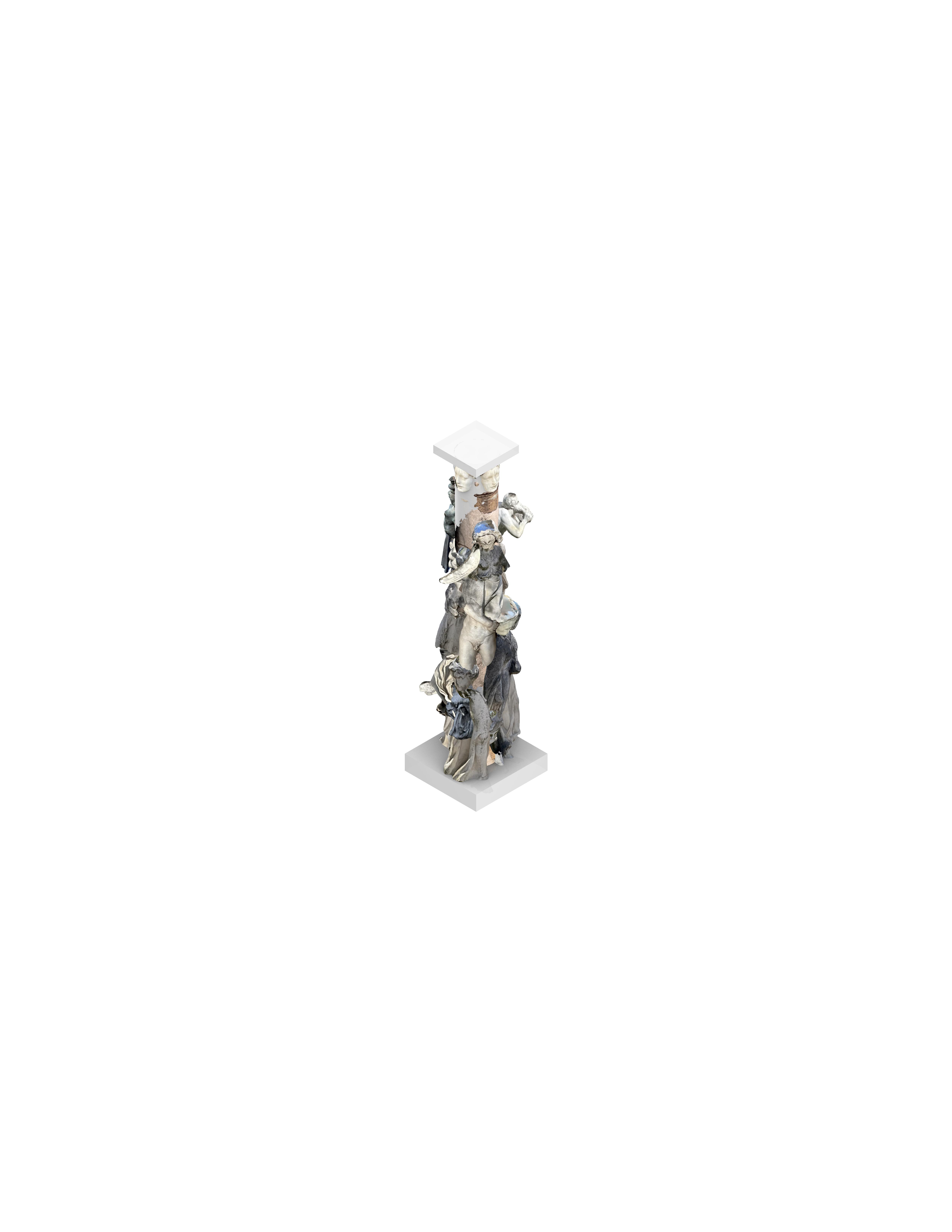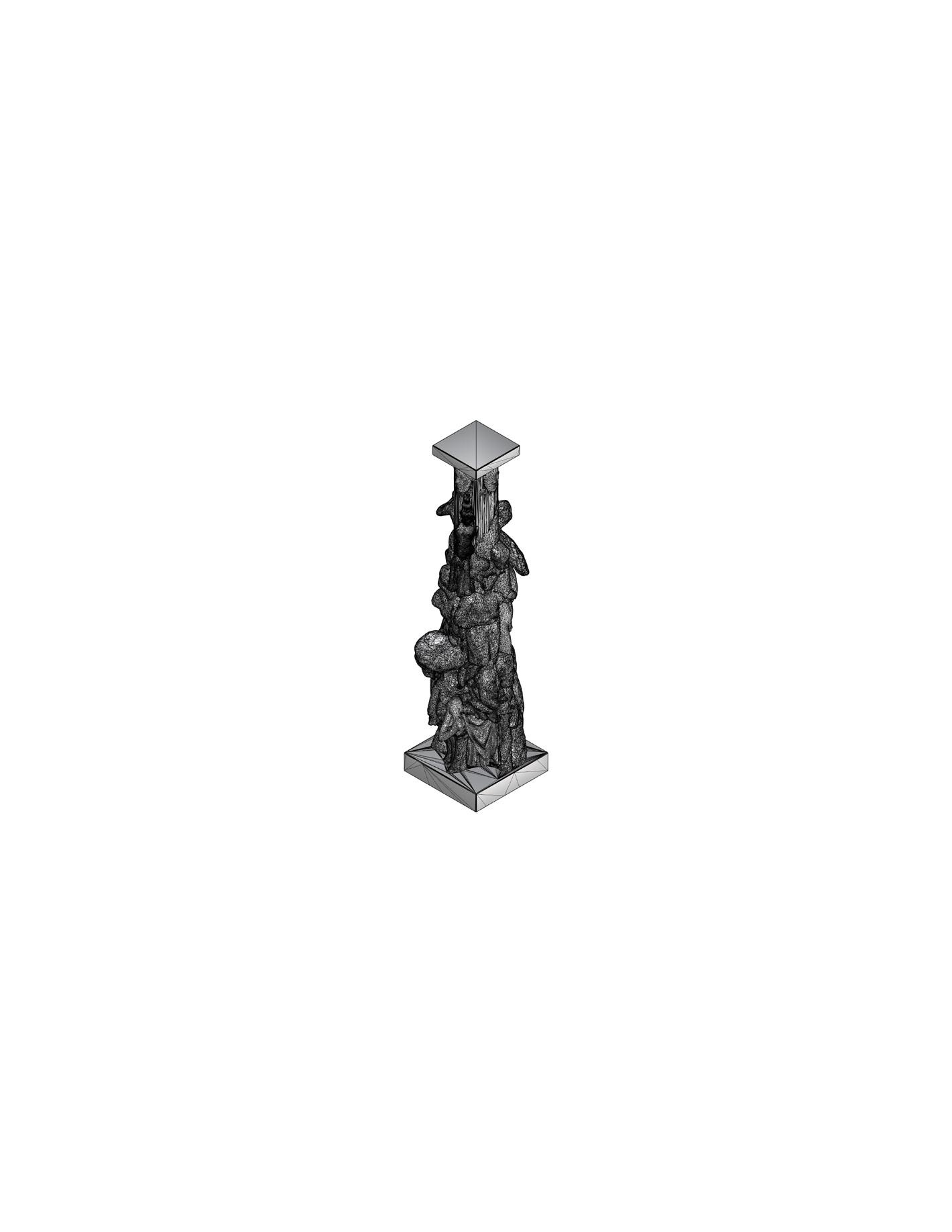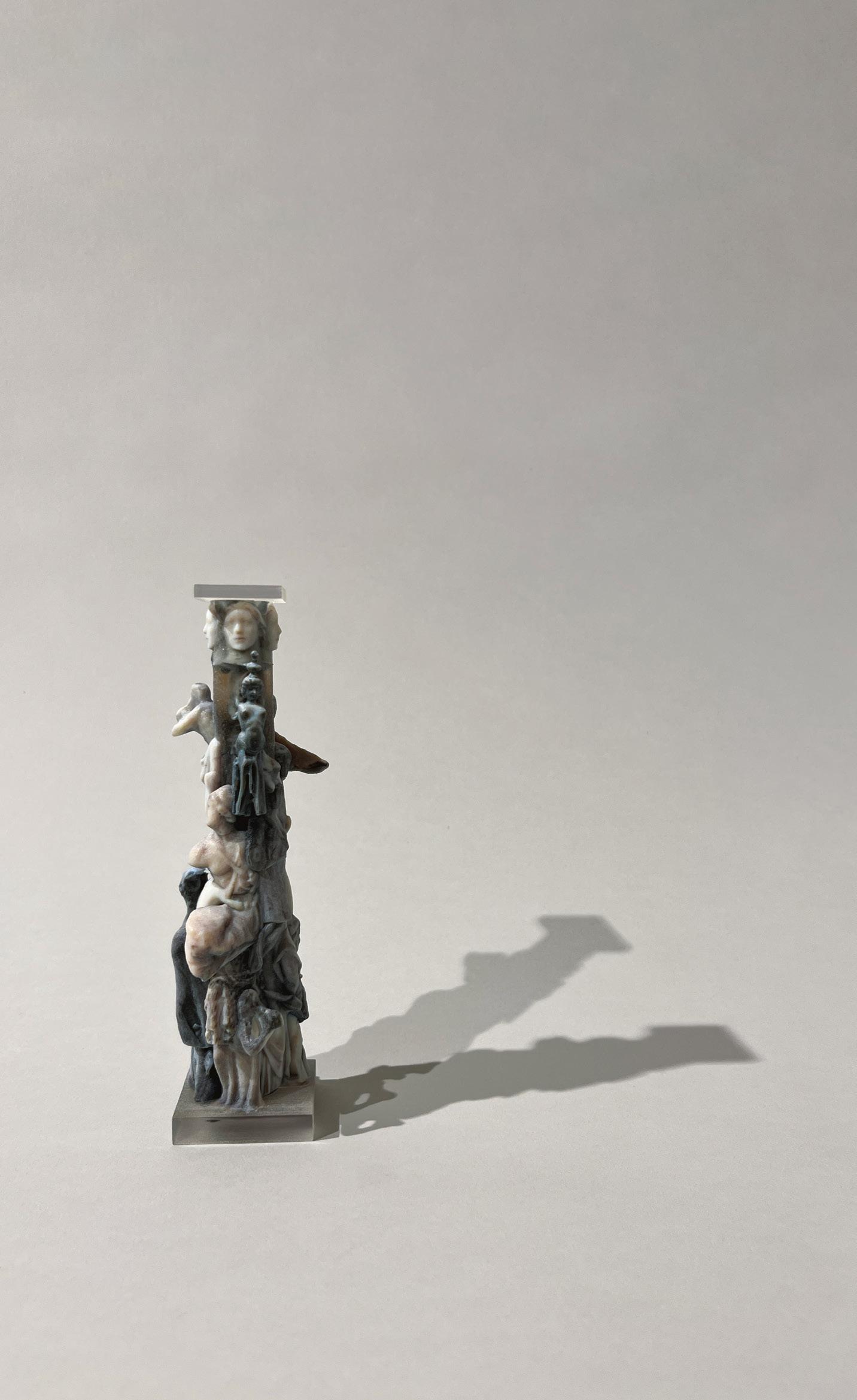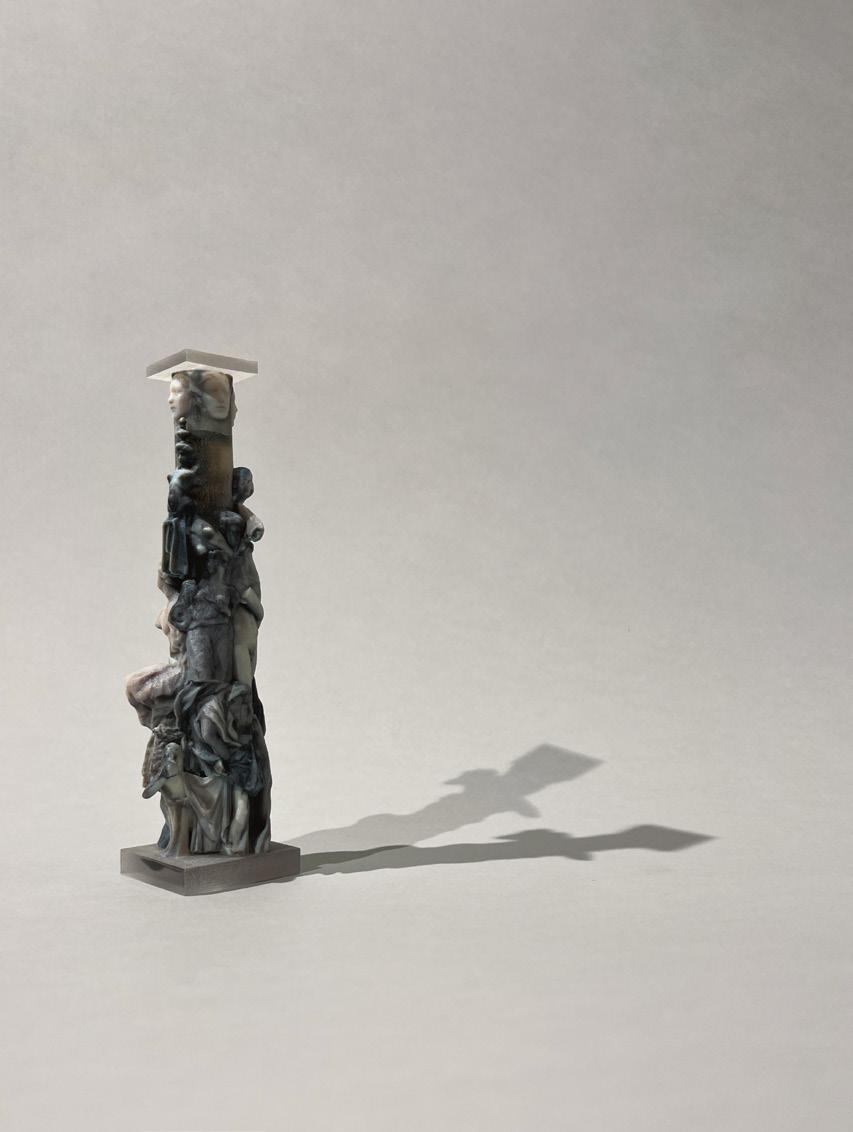Stage I Documentation
Techniques and Softwares: Photogrammetry, Agisoft
1. Scanning
The first stage of my work includes scanning sculptures using photogrammetry method and processing the data in Agisoft to create a series of 3D objects. Therefore, during my travel to different cities in Italy, I tried to capture and document sculptures of various size, material, age and physical appearance to represent the culture of the city.
2. Initial Data Handling
During this process, I had some challenges capturing the sculpture as they were all kept in outdoor spaces. Sometimes there were challenges regarding accessibility, sometimes the weather condition, light reflection and other natural variants. There were also issues with respect to initial data handling in Agisoft , sometimes the overlap between images was not enough, sometimes the number of images was insufficient and as a result, the final model was fragmented. Regardless, the process of scanning as well as abovementioned challenges has been recorded in this document to accompany the final output of this stage. The images are categorized based on the cities they were located in the order of documentation, showing the 3D model exports as well as the raw images used for photogrammetry .
GENOA, ITALY
My trip started in Genoa; a port city in northwest Italy. Sculptures could be found in a lot of places, in main squares celebrating warriors, on small fountains in random alleys, and mostly as building ornaments and niches. The problem was that these small ornaments and niches were usually not accessible and above the camera’s height. There was also the issue of very narrow alleys, which made it difficult in to walk around the object to fully document it.
Therefore, there are not as many scans from Genoa as there are from other cities. I managed to scan four pieces overall, two of which were disrupted in the data handling process as a result of light reflections from the surface of the material.
The Barchile (1697) . Location: Piazza Delle Erbe, Genoa . Date: 26 Mar 2023 . Time: 14:54
A column (unknown) . Location: Palazzo Carrega Cataldi, Genoa . Date: 4 Apr 2023 . Time: 20:46
1.00 Model - Textured
1.01
30.00 Model - Textured
30.01 Tie Points - Colors 30.02
Cloud - Solid 30.03 Model - Mesh Raw Images
TURIN, ITALY
My second destination was Turin, an important city in northern Italy. During my day trip to Turin, I saw a lot of sculptures around the city; especially in the parks and green spaces. Those sculptures were fairly modest; humbly surrounded by vegetation, slowly fading away in the background. The signs of deterioration were evident in their form as if they were left to be forgotten, untitled, and with no visitors.
Fortunately, there was no major issue documenting the sculptures. The problem was the identification of the pieces, that in many cases remained unknown due to insufficient data. For example, there were many valuable sculptures in Giardini Reali (Royal Gardens), mostly untitled and in poor condition.
(unknown) . Location: Giardini Reali (Royal Gardens), Turin . Date: 28 Mar 2023 . Time: 10:46
Stones (2017) . Location: Giardini Reali (Royal Gardens), Turin . Date: 28 Mar 2023 . Time: 10:50
Untitled
Precious
Untitled (unknown) . Location: Giardini Reali (Royal Gardens), Turin . Date: 28 Mar 2023 . Time: 11:18
(unknown) . Location: Giardini Reali (Royal Gardens), Turin . Date: 28 Mar 2023 . Time: 11:29
(unknown) . Location: Giardini Reali (Royal Gardens), Turin . Date: 28 Mar 2023 . Time: 11:31
door handle (unknown) . Location: Via Maria Vittoria, Turin . Date: 28 Mar 2023 . Time: 17:56
Untitled (unknown) . Location: Giardino Sambuy, Piazza Carlo Felice, Turin . Date: 28 Mar 2023 . Time: 19:23
14.00 Model - Textured
14.01 Tie Points - Colors 14.02 Point Cloud - Solid 14.03 Model - Mesh Raw Images
FLORENCE, ITALY
My next trip was to Florence, the capital city of the Tuscany region in Central Italy. This city seems to be a heaven for sculptures. Unlike what I experienced in Turin, original and copies of great sculptures throughout the history were carefully maintained for visitors’ display. Although, this well-preservation made the process of scanning exceptionally challenging for me. There were a lot to document, but not enough space to move around the objects in the space they were positioned that was occupied by many visitors.
Thus, although I tried to scan ten pieces in Florence, only six of them were useful in the end of data handling process. Most of the scans were fragmentary as a result of inadequate captures.
Patroclus and Menelaus (240-230 B.C.) . Location: Loggia dei Lanzi, Piazza della Signoria, Florence . Date: 30 Mar 2023 . Time: 16:45
(Early 2nd) . Location: Loggia dei
della Signoria, Florence . Date: 30 Mar 2023 . Time: 16:48
Engraving on the Perseus with the Head of Medusa plinth (unknown) . Location: Loggia dei Lanzi, Piazza della Signoria, Florence . Date: 30 Mar 2023 . Time: 16:52
16.00 Model - Textured 17.00
Untitled
Lanzi, Piazza
Part of the Perseus with the Head of Medusa plinth (1554) . Location: Loggia dei Lanzi, Piazza della Signoria, Florence . Date: 30 Mar 2023 . Time: 16:53
(1996) . Location: Via de’ Bardi, Florence . Date: 30 Mar 2023 . Time: 18:46
19.00 Model - Textured
20.00
Anna Maria Lvisa (1945 ) . Location: Palazzo Vecchio, Florence . Date: 30 Mar 2023 . Time: 16:58
San Giovanni Battista
ROME, ITALY
Rome was my final destination, the capital city of Italy. The whole city was a museum, an exhibition of sculptures in different piazzas, random alleys, over the bridges, and famous buildings. Some of them were well-known and some contained great stories about their discovery and restoration. Although, unfortunately, the issue of accessibility was a challenge here as well. Besides the significant number of visitors, some sculptures were positioned in a way that made it impossible to thoroughly capture their different sides.
A lot of scans were consequently, unusable. From the eighteen scans that I managed to complete in Rome, only half of them were acceptable to be used in later stages. Some of the scans in the following pages may seem fragmented as well, but there are still parts that can be used in the final product.
(unknown) . Location: Trevi, Rome . Date: 2 Apr 2023 . Time: 17:05
. Location: Pantheon, Rome . Date: 2 Apr 2023 . Time: 17:55
(1672) . Location: St. Angelo Bridge, Rome . Date: 3 Apr 2023 . Time: 11:17
Le Madonnelle Romane
22.00 Model - Textured
23.00 Model - Textured
22.01
The Tomb of Raphael (1833)
Angel with the Lance
Plaque names soldiers fallen (1918) . Location: Via San Pio, Rome . Date: 3 Apr 2023 . Time: 13:55
Untitled (unknown) . Location: Ponte Vittorio Emanuele II bridge, Rome . Date: 3 Apr 2023 . Time: 14:00
Pasquino (Early 16th) . Location: Piazza Pasquino, Rome . Date: 3 Apr 2023 . Time: 14:40
25.00
25.01
del Nettuno (1878) . Location: Piazza Navona, Rome . Date: 3 Apr 2023 . Time: 14:52
Abbott Luigi (14th-15th) . Location: Piazza Vidoni, Rome . Date: 3 Apr 2023 . Time: 15:29
Fountain of the Tritons (1715) . Location: Piazza Bocca della Verita, Rome . Date: 3 Apr 2023 . Time: 16:40
Fontana
28.00
A column (15th) . Location: Palazzo Istoriato, Rome . Date: 3 Apr 2023 . Time: 15:07
31.00 Model - Textured
31.01 Tie Points - Colors 31.02 Point Cloud - Solid 31.03 Model - Mesh
